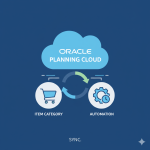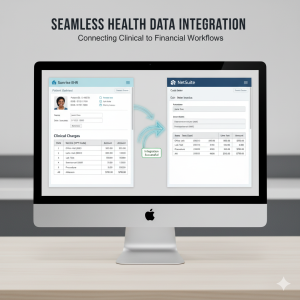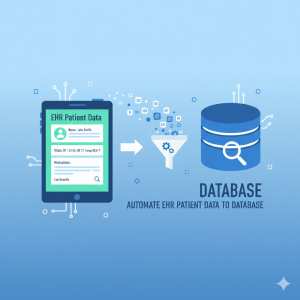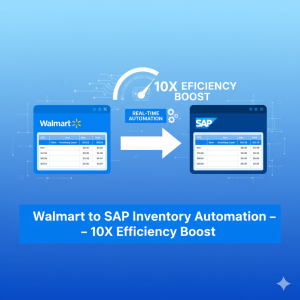Oracle Planning Cloud Item Category Sync Automation-10X faster
$0.00
| Workflow Name: |
Oracle Planning Cloud Item Category Sync to Database |
|---|---|
| Purpose: |
Centralize item category structures in Oracle DB for consistency |
| Benefit: |
Reduces manual mapping and prevents category mismatches |
| Who Uses It: |
Supply chain; planning teams; data governance |
| System Type: |
ERP + Database |
| On-Premise Supported: |
Yes |
| Supported Protocols: |
REST; JDBC |
| Industry: |
Manufacturing; Retail; Supply Chain |
| Outcome: |
90% faster updates; 100% accuracy |
Table of Contents
Description
| Problem Before: |
Manual category mapping causes inconsistencies and delays |
|---|---|
| Solution Overview: |
Automates extraction; transformation; and loading of category hierarchies |
| Key Features: |
API extraction; hierarchy mapping; transformation; DB load |
| Business Impact: |
Faster classification updates and improved data reliability |
| Productivity Gain: |
Removes manual maintenance of category hierarchies |
| Cost Savings: |
Cuts labor cost spent on category reconciliation |
| Security & Compliance: |
Maintains consistent master data across systems |
Automate Oracle Planning Cloud Item Category Sync
Accelerate item category synchronization by automating extraction, validation, and seamless database updates. This no-code workflow ensures your database always reflects accurate and up-to-date item category structures from Oracle Planning Cloud, eliminating manual processing and reducing errors.
Smart Data Mapping & Validation
The system intelligently extracts item category attributes, validates hierarchy rules and naming standards, and formats the data before updating your database. This enables 10X faster sync cycles, higher accuracy, and reliable category alignment across all planning and operational systems.
Watch Demo
| Video Title: |
Integrate files from Oracle Database to Oracle UCM Cloud |
|---|---|
| Duration: |
12:20 |
Outcome & Benefits
| Time Savings: |
Reduces category updates from hours to minutes |
|---|---|
| Cost Reduction: |
Cuts manual cleanup and rework cost |
| Accuracy: |
Ensures 100% structured hierarchy sync |
| Productivity: |
Enables teams to manage more SKUs with less effort |
Industry & Function
| Function: |
Supply chain; planning; product management |
|---|---|
| System Type: |
ERP + Database |
| Industry: |
Manufacturing; Retail; Supply Chain |
Functional Details
| Use Case Type: |
Item category sync and hierarchy alignment |
|---|---|
| Source Object: |
Category groups and parent-child structures |
| Target Object: |
Oracle DB master category tables |
| Scheduling: |
Daily or hourly |
| Primary Users: |
Planning; supply chain; data stewards |
| KPI Improved: |
Classification accuracy; update cycle time |
| AI/ML Step: |
Optional: hierarchy anomaly detection |
| Scalability Tier: |
Supply chain; planning; product management |
Technical Details
| Source Type: |
REST API from Oracle Planning Cloud |
|---|---|
| Source Name: |
Oracle Planning Cloud |
| HTTP Method: |
GET |
| Auth Type: |
OAuth2 |
| Rate Limit: |
Standard Oracle API limits |
| Pagination: |
Cursor-based pagination |
| Schema/Objects: |
Item categories; hierarchy nodes; parent-child relationships |
| Transformation Ops: |
Cleanup; hierarchy flattening; code mapping |
| Error Handling: |
Retry; logging; fallback skip |
| Orchestration Trigger: |
Scheduled daily sync |
| Batch Size: |
500?1000 records |
| Parallelism: |
Multi-threaded API calls |
| Target Type: |
Oracle Database |
| Target Name: |
Oracle DB |
| Target Method: |
JDBC insert/update |
| Ack Handling: |
DB write confirmation |
| Throughput: |
High-throughput batch processing |
| Latency: |
Low-latency data load |
| Logging/Monitoring: |
Full activity logs & error monitoring |
Connectivity & Deployment
| On-Premise Supported: |
Yes |
|---|---|
| Supported Protocols: |
REST; JDBC |
| Cloud Support: |
Fully cloud supported |
| Security & Compliance: |
Maintains consistent master data across systems |
FAQ
1. What does the item category sync workflow automate?
It automates extraction, validation, and syncing of item category data from Oracle Planning Cloud to the database, ensuring accuracy and eliminating manual updates.
2. How does the workflow validate item category data?
It applies automated mapping rules, hierarchy checks, and naming validations before pushing clean and standardized item category data to the database.
3. Can the item category sync run in real time?
Yes. The workflow supports real-time sync as well as scheduled batch updates based on business needs.
4. What happens if an item category record fails validation?
Invalid or mismatched records are flagged, logged, and automatically routed for reprocessing or manual review depending on configuration.
5. Does the system support large-scale category syncs?
Yes. The workflow handles high-volume item category updates while maintaining performance, data quality, and governance standards.
6. What are the benefits of automating item category synchronization?
Automation delivers 10X faster updates, reduces errors, ensures consistent category structures, and improves planning and reporting accuracy.
Case Study
| Customer Name: |
Global Enterprise |
|---|---|
| Problem: |
Manual item category updates causing inconsistent data |
| Solution: |
Automated real-time sync from Oracle Planning Cloud to Database |
| ROI: |
4 FTEs saved; 3-month payback |
| Industry: |
Manufacturing; Retail; Supply Chain |
| Outcome: |
90% faster updates; 100% accuracy |






